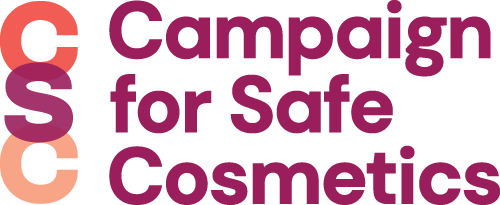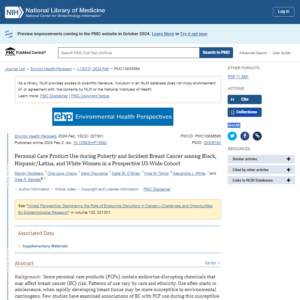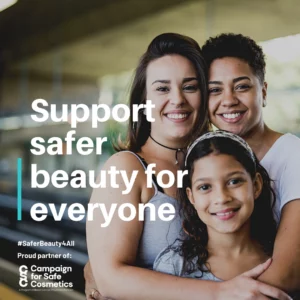by Heather Somerville, San Jose Mercury News
October 9th, 2013
It began more than a decade ago with four women who wondered whether the hair spray, perfume and shampoo they were using every day were safe.
Their quest to find an answer led them to their neighborhood drugstores, where they spent hours reading the labels on beauty products. What they read disturbed them: lists of chemicals and ingredients whose names they couldn’t pronounce.
This bootstrap effort grew into a national movement — the San Francisco-based Campaign for Safe Cosmetics — that has transformed the way consumers shop for personal care items, pushed the cosmetics industry to change the way it makes products, pressured lawmakers to call for more oversight and moved Walmart, the world’s largest retailer, to announce a policy last month banning some harmful chemicals from beauty merchandise.
“They really moved the needle on this,” Tracey Woodruff, director of the Program on Reproductive Health and the Environment at UC San Francisco, said of the campaign. “The way that we think about cosmetics and chemicals has changed because of the work that they did.”
After setting up its headquarters in 2004 in the heart of San Francisco, the group tapped into one of the country’s most environmentally progressive areas, finding allies among the activist groups here and a political climate that embraced toxic chemical regulations. The campaign launched the first large-scale grass-roots challenge to the country’s $60 billion beauty products industry, and in 2005 helped drive passage of California’s Safe Cosmetics Act — still the only law of its kind in the country — that requires cosmetic companies to disclose to public health officials the ingredients in their products sold in California.
“The fact the (campaign) is housed in the Bay Area has everything to do with the success that we’ve had over the past decade,” said Janet Nudelman, an early leader in the safe cosmetics movement and program director at the Breast Cancer Fund, which shares its office with the campaign.
The Personal Care Products Council, the industry trade group, declined to answer questions from this newspaper, saying in an email the questions “would require considerable time as they cover a multitude of complex issues.”
The council’s website says manufacturers “utilize the best science and latest available research data to substantiate the safety of a cosmetic product before it is marketed” and comply with guidelines “established by scientific and regulatory bodies around the world.” The council says that more than 11 billion personal care products are sold each year, with about 150 reported adverse reactions — namely skin rashes or allergies — which it says makes beauty products safer than food or medicine.
Concern about a group of chemicals called phthalates touched off the campaign. Phthalates, a class of man-made chemicals, are common ingredients in personal care products. Even in low doses they may cause early-onset menopause, infertility in males when exposed to the chemicals as babies, birth defects and developmental disorders, according to research from several medical and scientific bodies, including the American Society for Reproductive Medicine and UC San Francisco.
One of the campaign’s four co-founders, Jane Houlihan, a longtime leader of the Environmental Working Group, was in her office in Washington, D.C., about 12 years ago when she read a study from the Centers for Disease Control and Prevention that found disproportionately high levels of a type of phthalate in women of childbearing years. Women were exposed to more of it than men, Houlihan thought, through beauty products.
“I walked out of office and straight to the drugstore and just started reading labels,” she said.
Charlotte Brody, a registered nurse who at the time worked for nonprofit organization Health Care Without Harm, joined Houlihan’s research efforts, which involved repeated and lengthy trips to the drugstore.
The women “became obsessed,” said Brody, formerly of Inverness but now living in Virginia. “The kids are in the car getting cranky, and we were like, ‘Here, eat some candy, we’re going to read some more labels.’”
Phthalates only turned up on a handful of product labels because chemicals aren’t always disclosed. While the Food and Drug Administration has banned a few chemicals from cosmetics, the agency does not test or approve products before they go to market and cannot recall products, leaving safety in the hands of manufacturers. There are more than 12,500 chemicals used in cosmetics, according to researchers.
Brody and Houlihan were joined by Stacy Malkan, of Berkeley, who today leads the campaign’s publicity efforts, and Bryony Schwan, who has headed up a number of environmental organizations. They sent dozens of beauty product brands to a lab for testing; results told them that three-quarters of the products contained phthalates.
“We just felt like this was such a violation of women’s trust and human rights,” said Schwan, who now leads a company in Montana that finds nature-based alternatives to toxic chemicals. “These are chemicals that you are applying directly to your body.”
The FDA has said there is no conclusive evidence that phthalates pose a human health risk, citing studies from the Centers for Disease Control, the National Toxicology Program and the Cosmetic Ingredient Review, a research panel funded by industry lobbyists. However, medical groups including the Endocrine Society, Physicians for Social Responsibility and the American College of Obstetricians and Gynecologists have warned about exposure to hormone-disrupting chemicals such as phthalates.
Phthalates were just the beginning for the campaign. Houlihan spearheaded the creation of Skin Deep, a public database of tens of thousands of commonly used chemicals and beauty products, which revealed that 89 percent of the ingredients commonly used in cosmetics hadn’t been assessed for health risks. Today the Skin Deep website rates the safety of more than 75,000 products.
“They have single-handedly been responsible for people going, OK, here’s someplace I can find out about this ingredient and what the heck it is,” said Shannon Schroter, founder of Grateful Body, an organic skin-care manufacturer in Berkeley. “It’s this across-the-board awakening.”
Market analysts at the research firm Packaged Facts forecast the U.S. consumer market for natural and organic skin care, hair care and makeup, which during 2005 to 2010 increased 61 percent to $7.7 billion, could top $11 billion by 2016. In a 2011 survey by Deloitte, 57 percent of consumers said that safety was their No. 1 concern when buying personal care products.
Consumer pressure, along with a growing body of science, has caught the attention of policymakers. Rep. Jan Schakowsky, D-Ill., this year put forward a bill that would expand cosmetics regulation at the FDA. The California Department of Public Health is preparing to launch by the end of the year a website listing the ingredients in beauty products sold in the state that contain toxic chemicals.
The women behind the Campaign for Safe Cosmetics have paused only briefly to celebrate.
“Cosmetics are safer now than when we started, and we had a lot to do with that,” Brody said, “but until the last skin whitener doesn’t have mercury in it, until the last lipstick has no lead, we’re not done.”















